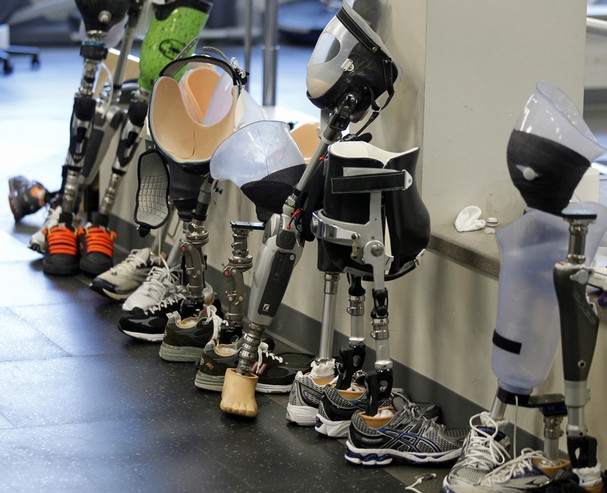Let’s hope that newly minted Secretary of Defense Chuck Hagel will live up to some of our expectations and not be afraid to tell it like it is. Let’s start with Afghanistan. We just found out today that an alleged data entry glitch in the Pentagon program that spits out regular assessments like the number of Taliban attacks on our forces prompted the Department of Defense to issue too-rosy proclamations on the progress of the war there.

From Robert Burns at The Associated Press on Tuesday:
The American-led military coalition in Afghanistan backed off Tuesday from its claim that Taliban attacks dropped off in 2012, tacitly acknowledging a hole in its widely repeated argument that violence is easing and that the insurgency is in steep decline.
In response to Associated Press inquiries about its latest series of statistics on security in Afghanistan, the coalition command in Kabul said it had erred in reporting a 7 percent decline in attacks. In fact there was no decline at all, officials said.
Defense Secretary Leon Panetta, who is among the senior officials who had publicly repeated the assertion of an encouraging drop-off in Taliban attacks last year, was disturbed to learn of the error, said his spokesman, George Little.
“This particular set of metrics doesn’t tell the full story of progress against the Taliban, of course, but it’s unhelpful to have inaccurate information in our systems,” Little said.
I hate to be cheeky, but why start now? The Pentagon and the war’s top commanding officers have been quite up front all along that winning the hearts and minds of the domestic audience was just as important — if not more important (in order to keep the money and the recruitment flowing) — than its PR successes with the Afghan people. At its peak in the year 2009, for example, the military was spending upwards of $4.7 billion a year on “strategic communications, ” which included $1.6 billion for recruitment and $547 million for public affairs at home. The military planners meant business.
With that kind of investment in “good news” it was no surprise over the years to hear generals completely buff and polish the truth about troop casualties and our tactical successes against the enemy. Especially in Afghanistan. There was always a silver lining or some sort of perfume to mist over what were clearly underwhelming statistics, if not bad news altogether. The worst was when nearly three years ago, Gen. David “Surge!” Petraeus, then commander of U.S and ISAF forces in Afghanistan, actually tried to tell congress that the use of IEDs by the Taliban against U.S forces had “flattened,” when really it was the worst year for our troops in terms of blast injuries,ever. From Gareth Porter in September 2010:
In an interview with the Wall Street Journal published Tuesday, Petraeus asserted that the use of improvised explosive devices (IEDs) by the Taliban had “flattened” over the past year and attributed that alleged success to pressures by the U.S. military, and especially the increased tempo of Special Operations Forces raids against Taliban units.
Data provided by the Pentagon’s Joint IED Defeat Organization (JIEDDO), however, shows that IEDs planted by Afghan insurgents killed nearly 40 percent more U.S. and NATO troops in the first eight months of 2010 than in the comparable period of 2009.
The data also show that Taliban IEDs wounded 2,025 U.S. and NATO troops in the first eight months of this year – almost twice the 1,035 wounded in the same months last year.
In the Journal interview, Petraeus said that the data on violent incidents in Afghanistan indicate a slowly improving security situation.
Almost a year later, I juxtaposed Petraeus’s rosy picture (he left his command for the CIA in the summer of 2011) and chronicled on these pages some the year’s worst IED stories:
According to the most recent data, there was a 120 percent rise in wounded soldiers undergoing amputations from 2009 to 2010 (75 cases to 171 cases, the steepest increase being in the last four months of the year). There was also a dramatic hike in soldiers suffering amputations of more than one limb and genital injuries, and an overall increase — 40 percent — in IED fatalities year-over-year.
As of Aug. 1, there were 158 IED-related coalition deaths (the vast majority American) in 2011, according to data posted at iCasualties. There were 368 such fatalities in 2010.

A year after that, I demanded the military “tell the truth already” about the newest “signature wound,” the “dismounted complex blast injury” that was rendering U.S and coalition troops not only legless but childless for life. At the same time, Afghan soldiers were being accused of killing coalition troops in increasing numbers of “green on blue” attacks. Then-Ambassador Ryan Crocker (he too, has since jumped ship) and now outgoing Gen. John Allen, did the rounds on television to assure everyone that things were running smoothly. “I think we have made tremendous progress,” Crocker told the BBC at the time.
Fast forward to December 2012, the Pentagon gives the 7 percent “decline in attacks” figure we now know was “flawed” to Congress in their mandated report of the war’s progress. Not sure if that will be changed now. Also in December, according to the AP, Panetta was telling reporters that “violence is down” for 2012, and Afghan forces “have gotten much better at providing security” in areas where they have taken the lead. “Overall,” he added, the Taliban “are losing.”
That narrative was carried over into last week’s UN report that civilian casualties are down year over year in Afghanistan. But, again, no surprise, the UN’s findings were actually a mixed bag: violence against women was up, as were attacks on civilians by “anti-government forces,” and U.S drone strikes had increased, too — from 243 in 2009 to 494 in 2012. That means more civilians killed by drone: 6 civilians killed and three wounded in five incidents, up from just one incident in 2011, according to the AP.
While the spin has largely been unsuccessful – most people believe the war was a waste, and we don’t hear much confidence that the government there is going to hold it together when we’re gone — but it hasn’t been helpful, either. It has blurred our vision, placated our fears and white-washed bad news for far too long.
Let’s hope that Hagel won’t feel the need to prettify the obvious. He should know better, more than most, that burying the lessons of the past merely damn us to repeating them in the future.




Excellent analysis, Kelley!
Educated people are well aware of the effective ways to solve their problems. They do not have to ask for other’s opinions for the purpose while the uneducated people do not know of the methods to solve their issues and have to rely for them on other people.
Excellent analysis, Kelley!
HeY Kelley! I read this article "Convenient “Clerical Error” Gives Rosy Picture of Afghan Progress" and you know I am very glad due to reading this post because I always think to write an article on any kind of topic but I get worried because of not have well experience about it and therefore I desire to hire someone to do assignment plus make me learn to write a best article on any subject. Thanks again I fully inspired with your post.
excellent blog post of 2016
excellent blog post of 2016